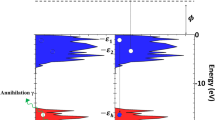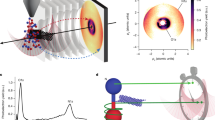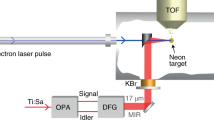Abstract
IT is well known that after an atom has been ionised, for example in its K shell, the ensuing reorganisation of the extra-nuclear electronic structure is not by any means invariably accompanied by the emission of K-radiation. Quite frequently we have instead a radiationless change of the type first completely specified by Rosseland, which results in the expulsion of a photo-electron of the second kind and in leaving the atom doubly ionised—until further reorganisation occurs—in its X-ray levels. These photo-electrons of the second kind were observed by M. de Broglie, but the manner in which they originate was first clearly established by Auger's beautiful work with the Wilson cloud chamber, and it is convenient and not inappropriate to refer to them as Auger electrons.
This is a preview of subscription content, access via your institution
Access options
Subscribe to this journal
Receive 51 print issues and online access
$199.00 per year
only $3.90 per issue
Buy this article
- Purchase on SpringerLink
- Instant access to full article PDF
Prices may be subject to local taxes which are calculated during checkout
Similar content being viewed by others
References
Burhop, E. H. S., Proc. Roy. Soc., A, 148, 272; February 1935.
Robinson and Cassie, Proc. Roy. Soc., A, 113, 282; 1926.
Robinson and Young, Proc. Roy. Soc., A,128, 92; 1930.
cf. Robinson and Cassie or Robinson and Young, loc. cit.
Author information
Authors and Affiliations
Rights and permissions
About this article
Cite this article
ROBINSON, H. Auger Effect and Forbidden Transitions. Nature 135, 826 (1935). https://doi.org/10.1038/135826a0
Issue date:
DOI: https://doi.org/10.1038/135826a0



